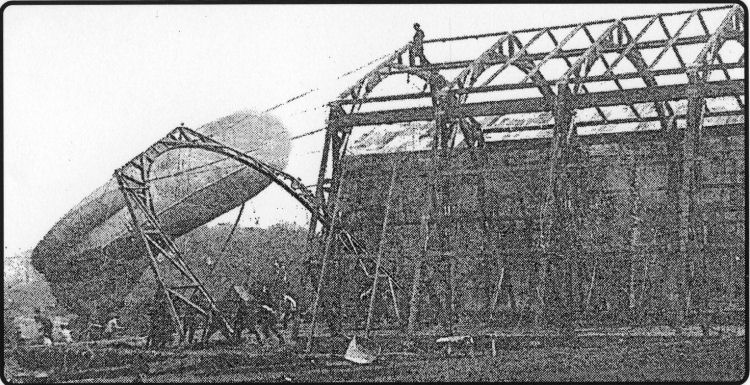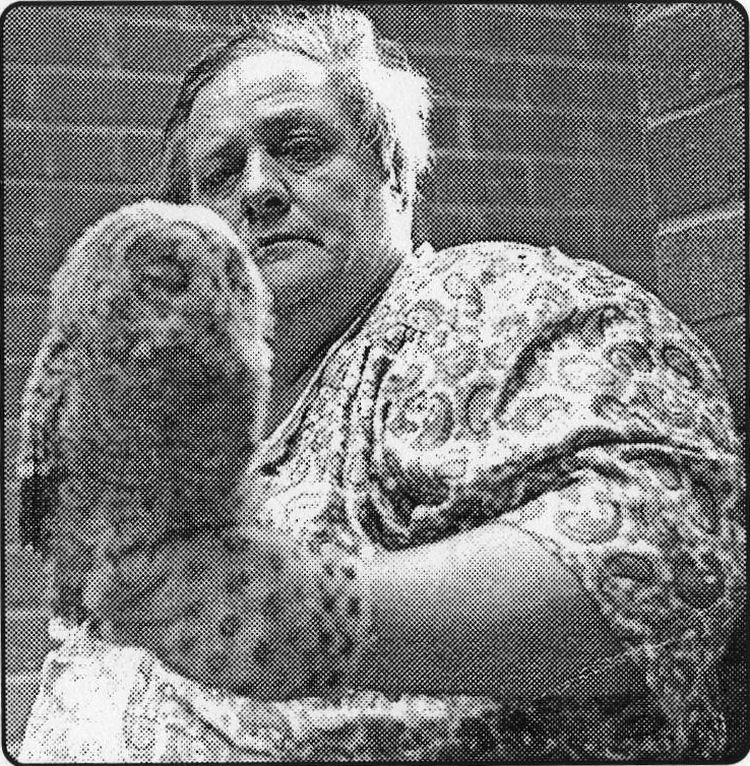
Published 28 December 2000
Quite a woman
DOVER had its Fatman - Thomas Longiey, a publican said to be the heaviest
British subject at 42 stone -while Folkestone had its Fat Lady, Edie Scowen.
But Edie, an aunt of Derrick Lawson, of Lynwood, Folkestone, topped Tom’s
weight by at least two stone!
Both were well known personalities in their day. Edie, who lived in
Geraldine Road Cheriton, came from a big Folkestone family. Sadly she was
just 50 at her death about 40 years ago. Tom, 56, died in 1904.
Derrick, like a good many people in the district today, have good reason to
have fond memories of ‘Aunt Edie.’
The daughter of Joseph Scowen and his wife Beatrice (nee Cockerton) she was
born in the old Electricity Houses in More-hall. Today those houses are in
what is known as Lawrence Way.
Edie, Derrick tells me, had a glandular problem when very young and this
finally caught up with her when she was in her teens and, at 16, she was
nearly 18 stone.
“Today, something could have been done for her, but in those far off days no
one seemed to bother about overweight people,” he said.
“Edie always called me her favourite nephew - but each time she saw me I was
nearly crushed to death,” he quipped.
Fed big family
“My grandfather, Joseph Scowen, always grumbled about Edie when she spilled
his beer on the way back from the pub, but she turned a deaf ear. When my
grandmother Beatrice died in 1934 Edie became a great helper to the family,
along with her sister Lil, and prepared food for the hungry family - all ten
of them!
“Edie was always helping people less fortunate than herself and the
neighbours loved her. She would run errands for a few coppers to pay for her
cigarettes and her always present bottle of “Bing” mineral water she kept in
a large apron pocket.
“She was always first in the queue at
French’s chip shop in Cheriton Road - and you could hear her laugh all over
Cheriton.
“Despite her great weight she would walk down the Road of Remembrance to
wave goodbye to our troops as they went off to war.”
When she was dying Derrick was living in Surrey and had an urgent message
from his Aunt Ivy that Aunt Edie wanted to see her favourite nephew before
she passed on. “I got the next train, arriving to find Edie propped up in a
great mahogany bed. She was pleased to see me, but died soon afterwards.
“Next day I had to see the undertaker about the funeral. When I told him, he
looked at his partner and said “It will have
to be cremation. She will be too heavy for a block and tackle job!
“She tipped their scales at forty-four and a half stone and a special coffin
had to be made. Neighbours rallied round and, altogether 13 men helped to
get the coffin out into the street and on to the hearse.
“And my Uncle Percy commented:
‘I bet Edie is up above saying to herself: ‘Look at all those fools lifting
me into the hearse!’
At the funeral nearly 150 people attended to pay their last respects, said
Derrick, adding that “Quite a few older people in Cheriton still remember
the ‘Jolly Fat Lady’ who would do anyone a good turn.”
READER Mr R Hatcher, of Coniston Road, writing of flooding in Folkestone
tells me how the Arsenal FC sent a team to the area in November 1910 to play
Shorncliffe Garrison & District in aid of Foord Road flood relief fund.
Blackbull Road and Foord Rd have had more than their fair share of flooding
over the years. "My mind went back to schooldays when the local secondary
schools contested the Chadwick Cup, which was to local schools what the FA
Cup is to thousands of soccer fans," he says. "In 1959 I was on the
substitutes' bench when Hillside, Morehall, Southlands and Dover Grammar
competed. But what happened to that cup," he asks. If you know ring him on
01303 242813.
MEMORIES reader Derrick Lawson lent me this memento of the First World War
Capel airship station days, The Royal Naval Air Service operated scouting
airships, reminiscent of Second World War barrage balloons, and patrolled
theChannel in the hunt for enemy submarines and prevent them attacking our
troop ships carrying soldiers to and fro across the Strait. There were at
least two massive hangars. Derrick's uncle Harold Scowen served with the
unit - more of that later.


 |
|
1900
Switchback attraction offends 'upper crust’.
>| QA CENTURY ago the conduct of some J.«7\Svlof the visitors - or was
it the working class nature of the visitors that upset the ‘superior’
classes - prompted some councillors to back calls for ending the lease
of the Switchback Railway on the beach near the old Victoria Pier. The
objectors, apparently, were some of those who lived in some of the most
valuable homes on the Leas. One councillor said during excursion visits
the noise and screaming of holidaymakers was very annoying. They didn’t
want the Switchback where it was, on land owned by Lord Radnor, and
wanted to be rid of It, he declared. Alderman Banks said it was of no
use except to those who owned it. In some towns it would be all right
but in Folkestone it was an annoyance to ‘respectable people.’ The lease
of the site was up for renewal and there was a move to persuade the Earl
to refuse this. At the annual meeting of the local Lifeboat Committee
members heard that it was hoped to have the very latest and most
powerful motor lifeboat on station at Folkestone some time in 1901 but
talks were still going on about a possible station for it somewhere
within the harbour.
|
|
1925
'Health’ chalet on the Leas sparks a storm of protest.
Q«(f WITH, apparently little thought to the fact they were setting a
precedent, the Council approved temporary siting of a chalet on the
famous Leas promenade for a well-to-do woman, Lady Sybil Middleton,
sister of Earl Grey. Her doctor had advised she would benefit from a
winter spent in the bracing air of Folkestone, The result was a storm of
protests, partly because it obstructed a public right of way along the
cliff-top and because of the “unfair privilege" she was gaining. The
chalet was soon daubed with the words: “A violation of public rights;
put it over the cliffs men!" And someone actually tried to move the
chalet while Lady Middleton was inside. Quickly responding to protests,
her husband, Lambert Middleton, promptly had the shelter removed,
Folkestone was gratified to hear that at least two other local
authorities were interested in building similar Zig-Zag path attractions
to its own. Blackpool was about to embark on the construction of a
Zig-Zag, with artificial white cliffs made of Portland sand and cement,
northwards from the old Glynn inn, famous for its smuggling
associations. And Southend Council had recently sent a deputation to
Folkestone to inspect the famous Zig-Zag path and caves, which were also
created out of simulated stone. Our writer Felix reported that they had
been very impressed.
|
|
1950
Harbour dredger brings up bomb & machine gun.
QCrt INTEREST was created at the port by Winston Churchill’s colt
Gibraltar, brother of Double Rose owned by film star Rita Hayworth,
which arrived from Boulogne. It was due to race as a two-year-old in
1951. With an awful racket at times, an estimated 150,000 tons of mud
and the odd rock of some size was dredged from Folkestone harbour, along
with a phosphorus bomb and a barnacle encrusted machine gun. An unusual
catch glowing in the dark caught the eye aboard well known fisherman
‘Knockout’ Spicer’s boat, the FE15. The tiny creature, which had taken a
hook in the North Sea, turned out to be a Sea Horse, thought to be
unusual in these waters. Crewman Tommy Noble put it In a matchbox to
show It around the Fishmarket it was the first time many had seen one.
But a poor specimen was once seen at East Cliff after a gale. Milford
Court Hotel was bought by the Kent Old People's Housing Society for use
as a residential home for the elderly. Memories of the day Field Marshal,
later Lord Montgomery, was serving as a 2nd Lieutenant at Shomcliffe
Camp just before the First World War were revived by a photograph of his
old regiment, the Warwickshires on parade with the mascot, an antelope,
which was published by our old midweek paper the Gazette.
|
|
1975
New plans to improve the busy coast road to West.
A p THERE was a new oil slick scare, with fears 1 9 for the coastline
from Folkestone to the East Goodwin lightship, but then freshening winds
swept it out to sea again. A new route was being investigated for the
A259 main coastal road, with the aim of bypassing the built-up areas of
Folkestone and Hythe and, perhaps, linking up with the M20. It was all
part of a review of the route from Dover to Brighton. Strange lights,
low over the Straits, were said to be due to unusual ‘shooting star'
activity. The Herald told of a hospital transport service, manned by
volunteers, which was to be introduced because the East Kent Road Car Co
was suspending services on Christmas Day and Boxing Day and it was
hoped, subject to volunteer drivers coming forward, to continue the
service aimed primarily for the elderly and physically handicapped
wishing to visit patients. Twenty-five years ago a commemorative
there-and-back flight took place from Lydd Airport by a historic DC3
aircraft, Yankee Zulu, a survivor of the Arnhem operation in the Second
World War. Owned by Skyways Cargo Airline, at Lydd, it flew to Antwerp
with a special cargo of valuable books about the Douglas Dakota, which
were afterwards auctioned on behalf of funds of the RAF Museum at
Hendon. In 1975 it was estimated 2,700 of these aircraft were still
operational. Skyways operated seven of them.
|
|



